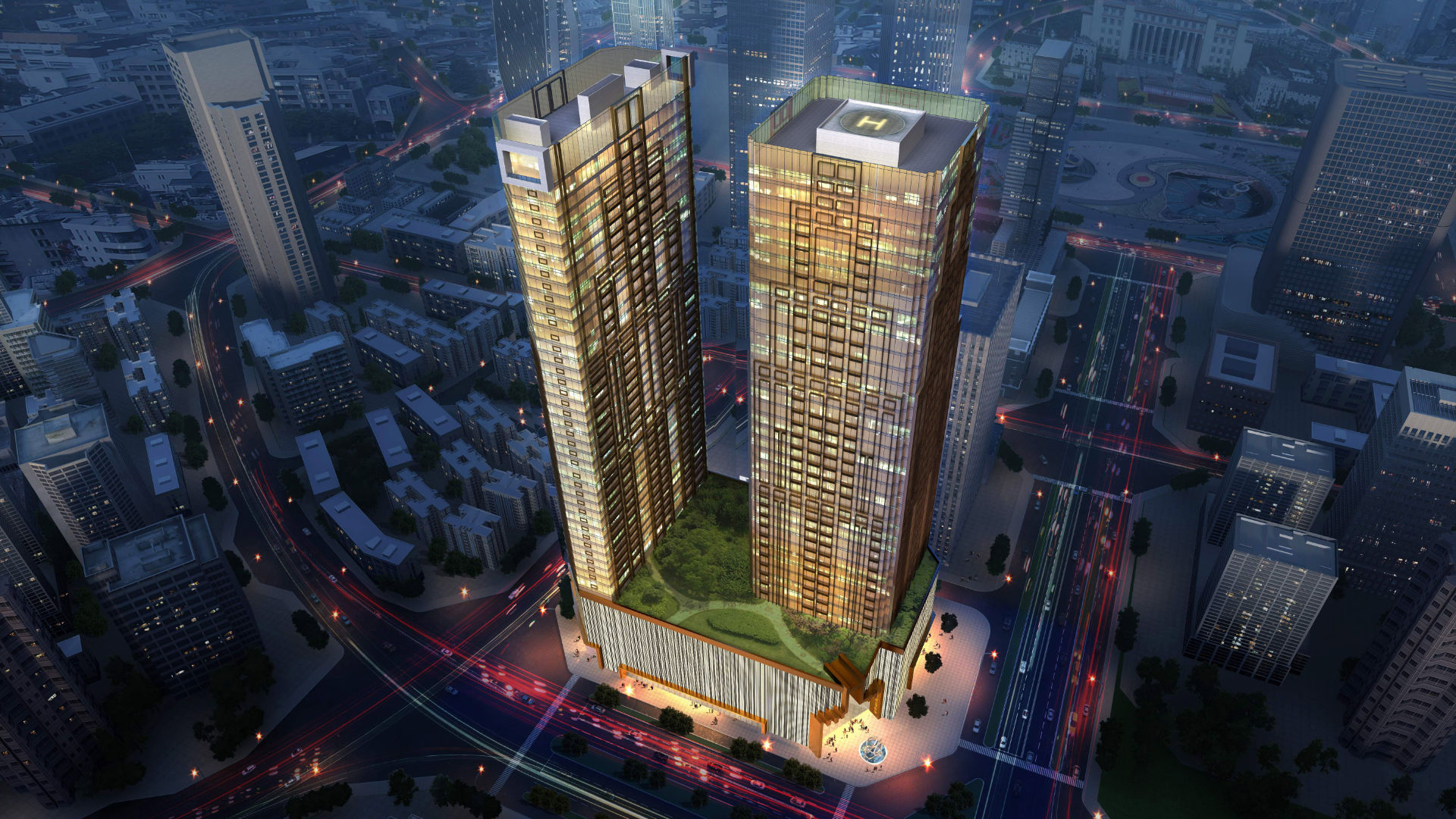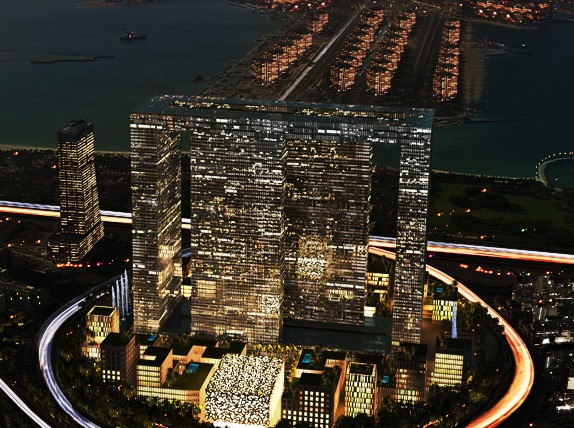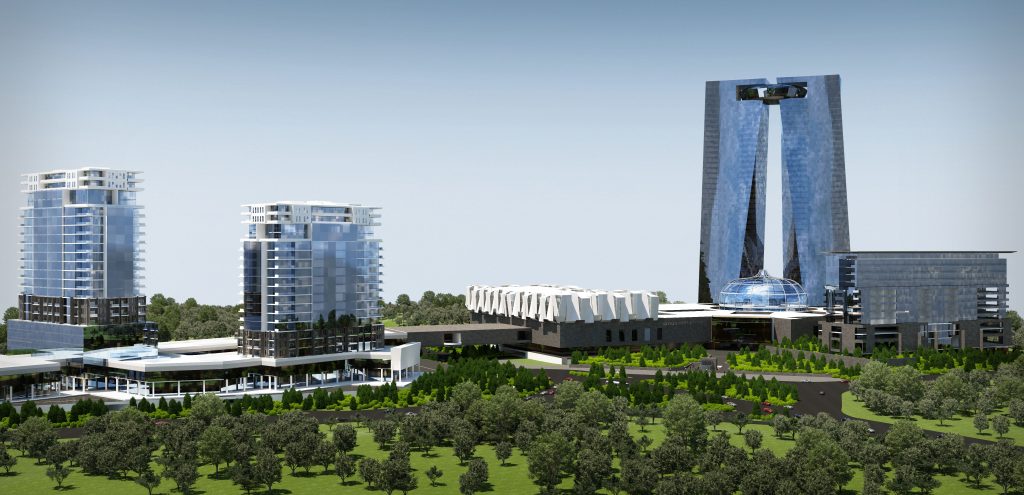
After Australia’s last recession of the 1990s, former Australian Institute of Architects national president Robert Caulfield saw an opportunity in procuring international work. He shares his experiences working in the UAE, Azerbaijan, Belarus, Iran, India, China and Vietnam.
A commission for a large overseas project may be a pipe dream for many architects. In actuality it’s pretty easy to achieve, but operating effectively in totally different cultures – which includes avoiding being ripped off – requires savvy. Regardless of potentially serious pitfalls, such opportunities can provide unmissable experiences. Our practice’s projects in the Far East, Middle East and Eastern Block have done just that, with work including the design of an entirely new city spanning 40 square kilometres, completed for the Chinese government.

My business partner Ivo Krivanek and I began our architectural practice, Caulfield Krivanek Architecture, in 1978 doing home renovations and have since enjoyed success in commercial, residential and institutional projects across Australia. However, the 1990s recession taught us that in order to survive and prosper, you need to diversify your client base.
In 2005, Dubai was booming, so we decided to have a shot at it. We booked an exhibition space at Cityscape in 2006, Dubai’s largest building trade exposition, printed project images, designed the display and paid a Dubai contractor to build us a stand. For an outlay of around $20,000, we secured three commissions with initial fees of more than a million dollars.
Clearly we needed a Dubai office and so, as required by Dubai law, we paid an ongoing fee to partner with an Emirati, who, in 2007, secured us office space in the Gold and Diamond Park building – quite an experience for our visitors. For three years we designed really exciting projects including the Dubai Pearl, in conjunction with Schweger Architects from Hamburg. Dubai Pearl incorporates residential apartments, retail and entertainment spaces and hotels, including the five-star Baccarat Hotel. The design process and fee agreements were not dissimilar to those in Australia, corruption was minimal and fees got paid.
The Dubai experience was fun and profitable, until the recession hit the Emirates in 2009. Suddenly, people everywhere were owed money and thousands of expats abandoned their leased cars at the airport and flew home because they’d lost their jobs. The four towers of the Dubai Pearl only made it to the seventh of 60 floors, payments were continually deferred and, in some cases, remain unpaid. Until then it had been a positive experience, and through our involvement in the project we gained commissions in Azerbaijan, Belarus, Iran and India. This work also fuelled our Melbourne office.

Generally, Australian architects remain faithful to the comfort of their own regions for their entire career. But it is really worthwhile for young architects to consider enriching their professional practice in overseas markets. In so doing, it’s essential to have a sound understanding of foreign economies, customs and laws. For instance, in the Middle East, sharia law applies. There are no interest rates; rather, commissions are paid when money is lent. You have to make sure that you don’t take on financial commitments that you can’t service. Bankruptcy doesn’t exist; bad debtors go to debtors’ prison. That’s why there were thousands of abandoned cars at Dubai airport.
We learned that Australian architects are as good as any in the world and we have a great reputation, so any Australian architect wanting to dabble overseas has a strong head start. The Dubai work led to us being asked by the Azerbaijani government to design the Crescent, a mixed-use commercial precinct alongside several 50-storey residential towers in Baku, the country’s capital. They paid us well and, unlike our experience in China, Azerbaijan never wheeled out a bunch of hidden obstacles.
After the economic downturn in Dubai, we were certainly hooked on the excitement of designing in different cultures and so we discussed having a shot at the Chinese market. This was also easy to crack – we simply asked our Chinese clients in Melbourne if they had government contacts. They did and we were able to present to their provincial governments. Because of our previous international work, it wasn’t difficult to secure large commissions.
Working with Chinese and subsequently Vietnamese clients took us to new levels of building scale, as well as patience. Our first commission was a masterplan to transform derelict industrial land in Nanjing into a fully functioning city covering 24-square-kilometres (currently under construction). We soon learnt that everything gets built differently to the way you designed it. According to Chinese law, foreign architects can only work up to schematic design stage; working drawings must be done by Local Design Institutes. We’d give the LDI our design development drawings and they would hack the designs around by changing products and facades. The end result was quite different from our submitted drawings. That’s China!

Architects working in China must be prepared for the constant push and pull. Their philosophy went like this: you do the work for them but they have no moral responsibility if they don’t pay, it just means they’re better businessmen than you. These practices aren’t illegal; it’s just business. So, you play it smart, get a mobilization fee of around 25 percent and demand staged payments contingent on handing over working drawings.
In Australia architects generally have the protection of a robust legal system, security of payment acts and various registration authorities. In countries that lack such systems, other tactics must be employed. Be mindful that a Chinese lawyer hired to collect outstanding fees might rip you off too.
The Asian business model is very fickle – you cannot define the scope of work as we do in Australia and fee agreements are often disregarded as soon as they are signed. But I wouldn’t have passed up the opportunity for our team to masterplan a 40-square-kilometre UNESCO world heritage site in the Purple Mountains region of Nanjing. Working with the Nanjing provincial government was a great experience with plenty of banquets, night clubs, karaoke bars and design presentations.
With our former fellow directors Domenic Crisante and Janusz Kowal we established overseas offices in Dubai, Shanghai and Ho Chi Minh City. Unless you want to be a full-time manager rather than an architect, I wouldn’t recommend going this far, but I’d always encourage a young architect to try international work. There’s a whole new world of architecture out there – from the Middle East, where there’s endless money to spend on high-standard construction with quality features using comprehensive contracts bound by sharia law, to China, where the design opportunities are gargantuan but the fee agreement counts for very little.
Ten-point checklist for securing overseas commissions without going broke
- Australian architects are as good as any in the world. Have confidence in yourself, your skills and your ability to tackle something you haven’t considered before.
- Overseas trade expositions are a good venue to showcase your work. Use Australian contacts to connect you with overseas governments and private contacts
- Have a good website, social media presence and personal references. Once you’ve done a pitch, you’ll be searched on Google, LinkedIn, Facebook and your website
- Overseas governments and clients know about our superior living conditions and may want you to help emulate them
- If you’re asked to do work up-front, keep it to a minimum. Prospective clients regularly tell multiple architects that they have definitely been awarded the project in a bid to fish for free schemes.
- If you get the job, ask for a mobilization fee, typically 15-25 percent of the fee. It’s expected and is a sign of good faith
- Have a Client Architect Agreement that clearly outlines deliverables including numbers of drawings, the fee and a payment schedule, otherwise you may find yourself with fixed fees and a never-ending workload. The agreement will only be reached after a considerable period of negotiation, so be prepared.
- Check with the local government regarding paying taxes out of your fee. You will be surprised how many organizations will be trying to take a cut before your fee leaves the country. These can amount to 15 percent or more if you’re not careful.
- Send bills regularly, monthly if possible, and be prepared to stop work if the money flow slows. Bill ahead of your work and always assume that you’re not going to collect the last fee, so make this as small as possible in your agreed billing schedule.
- Always do electronic presentations from a file or USB stick. Avoid handing over drawings until you’ve been paid.
Originally published 25 June 2020 in ArchitectureAU
